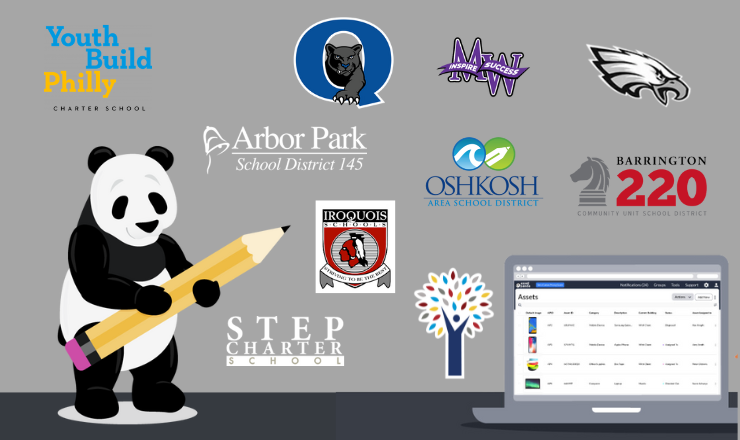How to Know When You’ve Outgrown Your Asset Management Solution

Take Control of Your Assets
A personalized demo is just one click away.
From laptops to lab equipment and everything in between, charter schools and K-12 districts rely on thousands of assets every day. But rapid growth, limited budgets, and evolving compliance requirements make it harder than ever to track these resources effectively.
If you’re still relying on spreadsheets or outdated tools to manage your assets, you’re likely facing various inefficiencies, such as:
- Learning disruptions due to lost, damaged, or unavailable assets
- Unexpected costs associated with repairs and replacements
- Difficulty achieving grant compliance and securing future funding stemming from or because of inconsistent asset records
With limited budgets and strict funding requirements, schools can't afford to rely on manual spreadsheets or piecemeal tracking systems. Fortunately, there’s a better way.
If you’re already experiencing any of these pain points, it's time to seriously consider upgrading to a modern, cloud-based asset management system. Here are three sure signs you've outgrown your current solution, and a checklist of what to look for in your next solution.
3 Signs that You’ve Outgrown Your Current Solution
1. Your school’s rapid growth has outpaced your current system
When you expand enrollment or add new campuses to your district, manual processes just can’t keep up. Continuing to rely on outdated systems often leads to errors, lost devices, and time wasted reconciling scattered spreadsheets.
2. You’re duplicating work across teams
With no centralized platform to access and manage asset data, your teams spend hours inputting data into multiple tools. Miscommunication becomes inevitable, leading to misplaced assets, time loss, and frustration.
3. Your legacy system costs more than it’s worth
Upgrading outdated tools often comes with hefty fees—yet they still fall short of providing the features that your school needs to operate efficiently and scale effectively.
How to Choose an Effective School Asset Management Solution
Whether you’re facing one or all the above challenges, it’s time to make the switch to a more comprehensive school asset management solution. While choosing and adopting new software can seem like quite a feat, a centralized and intuitive platform will save many staff hours and eliminate a host of complications in the long run. Here are 4 features to look for when choosing an effective school asset management platform.
- Customizability: While IT devices are incredibly important to track in the era of 1:1 learning, K-12 and charter schools also need to track numerous other assets like furniture, sports equipment, and band instruments. It’s essential to find asset management software that is easily customizable and can track every kind of asset. When you can build your existing naming conventions and workflows directly into the platform, your team can more quickly adopt the new solution, which in turn leads to a faster ROI.
- Integrations: Beyond matching your current assets and processes, an asset management system must also integrate at the core of your tech stack. This means selecting a solution that offers integrations with the applications you use every day (e.g., mobile device managers, directories, and service desks) so you can easily sync information across your entire tech stack for superior data consistency and accuracy.
- Scalability: Whether you anticipate adding more assets or use cases to your new system, or plan to expand your asset management program across your entire district, you need a platform that easily scales with you. Make sure that your chosen solution can easily track more items or use cases, house more users, or even manage multiple accounts under one umbrella instance. A scalable, multi-tenant platform gives you peace of mind that you won’t need to find a new asset management solution in the near future.
- Onboarding and support: When you make any software purchase, it is paramount to have comprehensive onboarding. The better your team understands how to use a platform from the get-go, the faster you can streamline your asset management workflows and boost efficiency. Of course, ensure the solution you choose also provides robust support after implementation so you never have to go it alone.
Conclusion
Deciding to replace your manual asset management solution isn't a split-second decision. But if your school is consistently experiencing operational inefficiencies and difficulty achieving grant compliance, it's time to consider the benefits of a more comprehensive platform. Asset Panda can help.
Asset Panda's centralized asset management solution already gives K-12 and charter schools across the country full visibility into all their assets, simplifying their processes and helping them be better stewards of educational funds. Our robust platform provides real-time insight into the status and location of your assets along with their full lifecycle history for seamless auditing and reporting. With our multi-tenant solution, you can easily scale your platform to track additional use cases or manage items across every school in your district—all in one convenient place.
Ready to upgrade your school asset management system? Request your personalized demo.
Take Control of Your Assets
A personalized demo is just one click away.
Related News & Press

Learn more from an Asset Panda expert
Get a FREE consultation with an asset tracking expert to find out how you can transform your asset tracking.
Contact our Sales Team at (888) 928-6112


